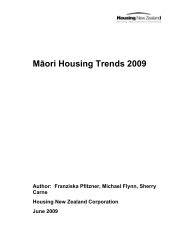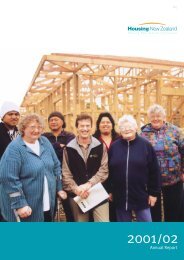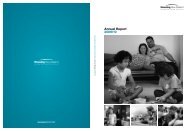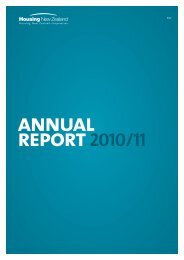MÄori Housing Trends 2010 - Housing New Zealand
MÄori Housing Trends 2010 - Housing New Zealand
MÄori Housing Trends 2010 - Housing New Zealand
You also want an ePaper? Increase the reach of your titles
YUMPU automatically turns print PDFs into web optimized ePapers that Google loves.
population. The proportion of the Pacific population was nearly twice that of theMaori population.Figure 18 Proportion of people living in crowded and non-crowded households, by ethnicity(2006)40%35%30%25%20%15%10%5%0%Severelycrowded (two ormore bedroomsrequired)Crowded (onemore bedroomrequired)No bedroomsspare and nonerequiredOne bedroomspareTwo or morebedroomsspareMāori European Pacific PeoplesSource: Statistics <strong>New</strong> <strong>Zealand</strong>, Census 2006, customised data prepared for HNZCFactors associated with crowding109 According to Statistics <strong>New</strong> <strong>Zealand</strong>, crowding is concentrated disproportionatelyamong some ethnic groups, is associated with low income, high numbers ofdependent children, two or more families living in a household, one-parent families(living with others) and extended family living 36 . According to the 2009 SocialReport 37 , cultural attitudes, economic conditions and age structure account for thevariation in crowding levels between ethnic groups.Living in Corporation housing110 Overall, about five percent of the total <strong>New</strong> <strong>Zealand</strong> population lives in Corporationhousing. In 2006, about 12 percent of the Māori population lived in Corporationhousing. This compared to two percent of the European, and 26 percent of thePacific population (see Table 8).36 Statistics <strong>New</strong> <strong>Zealand</strong> (2003: 1-2).37 Ministry of Social Development (2009) Social Report p. 127.29














